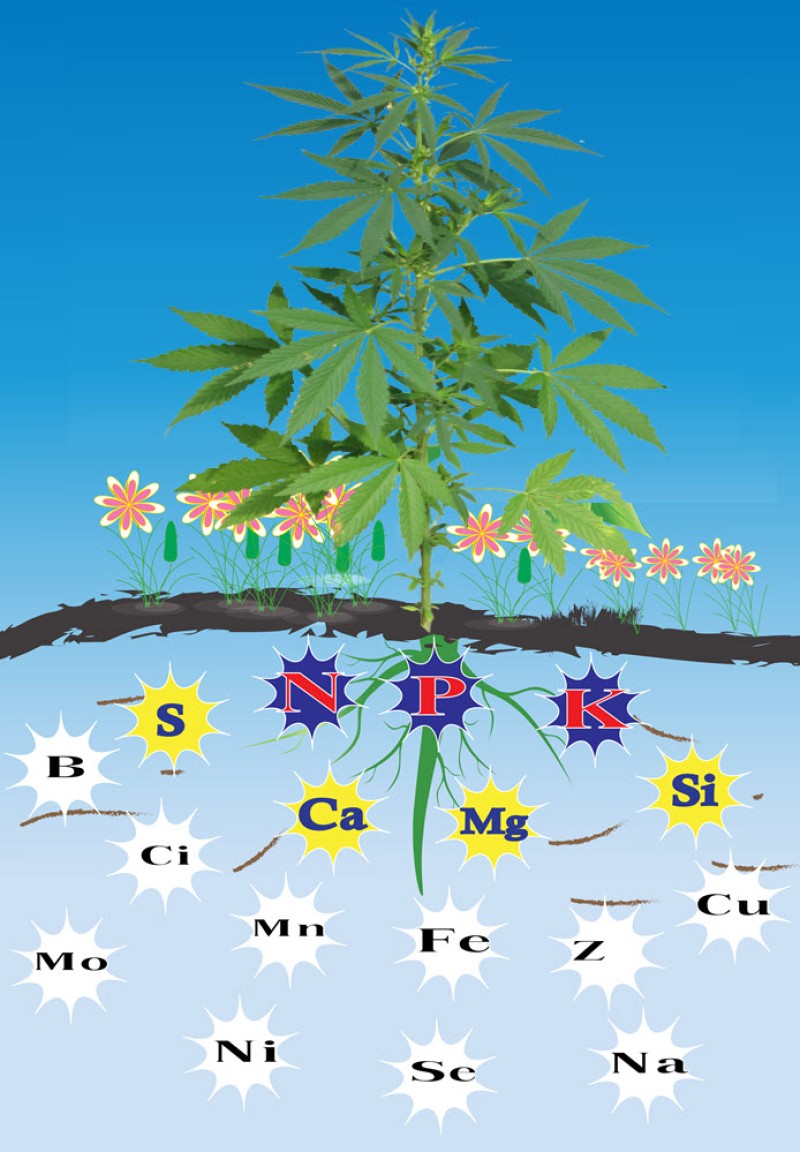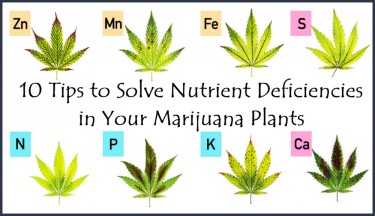
Nutrient lockout is one of the most general problems weed growers face, and it is, by a stretch, a lot more problematic than deficiency of a nutrients seen in plants. Sadly, a nutrient lockout is not always recognized as what it is by less-experienced growers. Often enough, you'll find them doing the opposite of what is needed to solve the problem. From this article, you will learn how to identify nutrient lockout and, more crucially, how to treat it and avoid it in the future.
WHAT IS NUTRIENT LOCKOUT, AND HOW IT HAPPENS
Nutrient lockout occurs when nutrient elements such as iron, magnesium, potassium, and zinc are available in the root zone, but your crop can't take them up. It is possible in every growing medium, but it is more probable to occur in coco coir, soil, or rockwool.
The nutrient lockout may be caused by the supersaturation of chemical fertilizers with a high salt level. At times, the overabundance of one element can result in the others being locked out. This is a very rampant issue that many growers have come to face. Another quite common issue that can cause nutrient lockout is a false pH value in the medium of growth. A highly acidic or basic medium will lead to nutrient lockout. Ensure your pH level is very close to neutral, within 6.0-6.5.
As soon as you notice your plants are in a nutrient lockout, it would help if you were quick to react. It is crucial to overturning it in time to free up the nutrients. If left unattended, nutrient lockout will eventually result in a deficiency of nutrients and kill your plant eventually. To keep them safe, you will have to know how to rectify nutrient lockout and identify it. It is perfect if you have yet to face this problem. But, continue reading to learn how to avoid it later on.
HOW TO IDENTIFY NUTRIENT LOCKOUT
A nutrient lockout can be hard to identify. Your weed plants can simply appear to be suffering from underfeeding, while the actual problem is something else. pH variations, overfeeding, or other stressful factors that affect the plant's root zone might be the cause.
Weed plants are pretty delicate and demand daily care in order to attain a positive yield. Being worried about your plants and interested in their well-being means you're already halfway through the fight to identify a nutrient lockout.
This health problem will make plants seem and feel weak. There will appear to be no growth, and the leaves will begin to yellow. Untreated, the yellow leaves will turn brown, curl up, and look burnt.
TREATING NUTRIENT LOCKOUT
Firstly, you should verify that you are adequately dosing your nutrients. Then, ensure you're applying the correct combination of nutrients and in the appropriate quantities. This occurs more with salt-based fertilizers as salts have the tendency to accumulate, altering the pH of your medium. Hence, why inputting extra nutrients after identifying a nutrient lockout isn't helpful.
If you have ensured an ideal nutrient mixture, next is to check that your pH is also excellent. To do this, you'll flush your growing medium. On the day you flush, go the extra mile on the day you reduce the humidity in your grow room to 49%. Flushing can harm the roots because it overwaters your root zone. This should be done for a lights-on cycle and a lights-off cycle.
Flush out your soil with fresh pH-balanced water. In the case of a hydroponic system, it will be enough to just run a fresh solution through your setup. The extra water coursing through your medium helps to break down the salt build-up and makes nutrient uptake easier. On completing this process, instantly provide your plant its rightful share of nutrients and water solution.
But, make sure you let the soil dry out first. This is to allow the root to breathe, thus preventing root rot.
The pH-adjusting solution is also worth a shot.
These won't wash away the salt build-up, but they're efficient in a nutrient lockout situation.
PREVENTING RECURRENCE
When facing a problem with your weed plant, experience is the best teacher. Your ability to provide a solution or not, as well as your knowledge of how to avoid a future lockout, is what separates the boys from the men growers.
To keep plants in perfect health, regular flushes are recommended. Once at the beginning of the flowering stage and another halfway through the flowering cycle.
It's crucial to know that pruned plants will need fewer nutrients. This is sensible, but not all growers think about it. In pruned plants, there is less mass to be fed by the plant. Consider this when feeding your pruned cannabis plants.
If you intend to switch up your lighting and/or nutrient plan, it should be done slowly. Never make sudden changes, as it will stress the plant, and you might end up creating more problems instead of fixing one. Weed plants need time to adapt to new environments. There are unlikely to be sudden changes in nature. At least a week should pass when moving into vegetation and flowering stages. Do not alter the nutrient levels when moving to the flower room, as this will slow the plant's growth at a critical time.
Bottom Line
Lastly, something that should be taken note of is the significance of using good-quality supplements and organic fertilizers. As we should know by now, salt-based fertilizers encourage the accumulation of salt in the root zone. Much like humans, salt dehydrates the plant, stopping it from properly absorbing the good stuff. Making use of organic fertilizers doesn't mean that it is impossible for there to be nutrient lockout; it just makes it less likely.
Many novice cannabis planters become victims of nutrient lockout, and experts aren't excluded either. Everyone wants their plant to get enough food to grow big, healthy buds, but overfeeding is a bad idea. But now that you possess the knowledge on how to identify, solve and prevent nutrient lockout, the opportunity to achieve a bountiful harvest and successful grow is yours.
NUTRIENTS FOR CANNABIS PLANTS, READ MORE..
HOW TO SPOT NUTRIENT DEFICIENCIES IN YOUR CANNABIS PLANTS!








